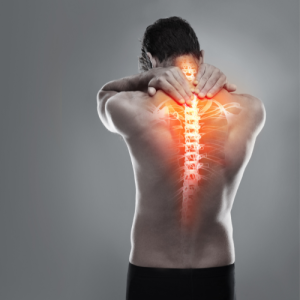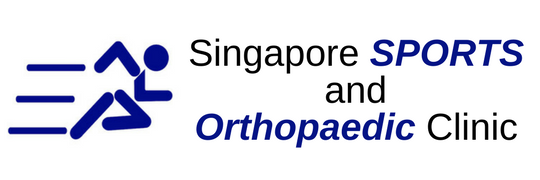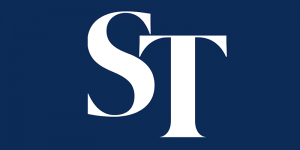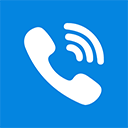Lower Back Pain: Causes, Symptoms, Diagnosis, and Treatment
This type of body pain can result from injuries, conditions, or diseases, most commonly affecting muscles or tendons in the back. The pain can range from mild to severe, potentially affecting daily activities such as walking, sleeping, and working. Rest, pain relievers, physical therapy, and other treatments like cortisone injections or hands-on therapies can help alleviate pain and promote healing. Some cases may require surgical intervention for repair.
How common is the issue?
- Around 80% of people experience lower this problem at some point, making it one of the most common reasons for healthcare provider visits.
- Certain factors increase the likelihood of experiencing stiffness, discomfort in the lower part of the body, including age (over 30), overweight/obesity, weakened abdominal muscles, sedentary lifestyle, occupations involving heavy lifting or bending, structural problems, certain diseases (e.g., osteoarthritis), and mental health issues like depression and anxiety.

What are the symptoms?
- The pain can manifest suddenly or gradually, with or without a specific triggering event.
- The pain can be sharp or dull, and it may radiate to the buttocks or down the back of the legs (sciatica).
- Certain positions, such as bending over, may worsen the pain while lying down can provide relief.
- Additional symptoms may include stiffness, posture problems, and muscle spasms.
Lower back pain can result from
- Various injuries, conditions, or diseases, including strains, sprains, fractures, disk problems (e.g., bulging or herniated disks),
- Structural issues (e.g., spinal stenosis or scoliosis), arthritis (e.g., osteoarthritis or ankylosing spondylitis),
- Diseases (e.g., tumours or infections), spondylolisthesis (vertebrae slipping out of place).
Diagnosis and Tests
- Healthcare providers will inquire about symptoms and conduct a physical examination.
- Imaging studies, such as X-rays, MRI, or CT scans, may be ordered to assess bones, muscles, ligaments, and tendons.
- Electromyography (EMG) may be performed to evaluate nerve and muscle function.
- Blood and urine tests might be necessary to detect genetic markers, kidney stones, or other conditions causing the body ailments.
What are the treatments?
- Rest, ice, and over-the-counter pain relievers are typically recommended.
- Gradual resumption of normal activities and staying active promote healing and blood flow to the affected area.
- Treatment options depend on the underlying cause and may include medications (e.g., NSAIDs, muscle relaxants), physical therapy, hands-on manipulation (e.g., osteopathic or chiropractic), injections (e.g., steroids), and surgery (in severe cases).
Prevention
Can lower back pain be prevented?
- While certain causes of lower back pain cannot be prevented, individuals can reduce their risk of back injuries.
- Maintaining a healthy weight reduces pressure on the spine.
- Strengthening abdominal muscles through exercise programs like Pilates supports the spine.
- Proper lifting techniques, such as using leg muscles instead of the back, can help avoid injuries.
Outlook / Prognosis
- What is the outlook for people experiencing this ailments?
- The prognosis varies based on the cause of the pain.
- Most people with back strains and sprains recover without long-term health issues, although some may experience recurring episodes.
- Chronic back pain may require ongoing management, especially in older individuals with degenerative conditions.
- Surgery and other treatments can help people with various injuries and conditions live pain-free lives.
When should one seek medical attention?
- Usually improves with rest and self-care measures.
- Medical attention should be sought if the pain persists for over a week, is accompanied by tingling, numbness, weakness, or affects normal activities.
- Additional warning signs include fever, unexplained weight loss, bowel or bladder problems, or other concerning symptoms.
When visiting your healthcare provider, make sure you ask these questions:
- What is the most likely cause of my back pain?
- Do I need any tests?
- What treatment approach do you recommend?
- What are the possible side effects of the medications you are recommending?
- I have other medical conditions. How can we best manage them together?
- How long will I need treatment?
- What self-care measures should I try?
- What can I do to prevent back discomfort from coming back?
What to expect from your doctor:
Your doctor is likely to ask you questions, such as:
- Have you ever injured your back?
- Is the pain constant?
- Does the pain affect your ability to function? How?
- Do you have other signs or symptoms besides back numbness, stiffness and ailments?
- Do you do heavy physical work?
- Do you exercise regularly? What types of activities do you do?
- How often do you feel depressed or anxious?
- Do you sleep well?
- What treatments or self-care measures have you tried so far? Has anything helped?
Do you want to understand your back pain issues? Book an appointment today to have your back pains checked by our orthopaedic specialists. Your sports doctor will conduct a thorough assessment. From their assessment, they will come up with an appropriate treatment plan, including exercise, manual techniques, and education
Lower back pain is a common condition that can significantly impact daily life. By understanding its causes, symptoms, and available treatment options, individuals can make informed decisions to manage and prevent pain in the lower back. If pain persists or is accompanied by severe symptoms, seeking medical attention for appropriate diagnosis and care is crucial. By adopting preventive measures and maintaining a healthy lifestyle, individuals can reduce their risk of experiencing lower back pain in the future.









